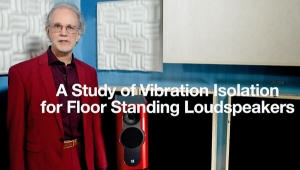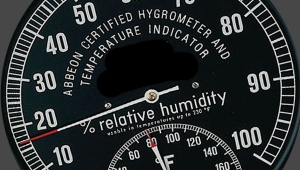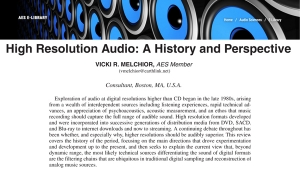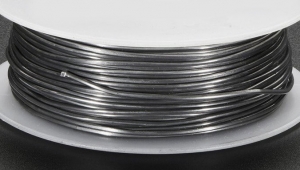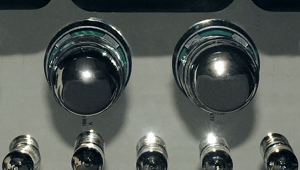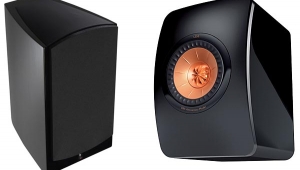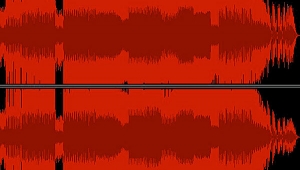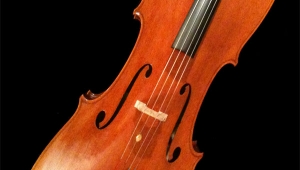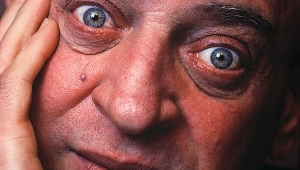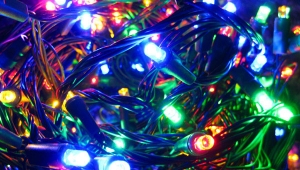| Columns Retired Columns & Blogs |
Illuminated Cables & the Laws of Physics
Nature and Nature's laws lay hid in night; God said, Let Newton be! And all was light. —Alexander Pope
Footnote 1: "When I think back on all the crap I learned in High School / it's a wonder I can think at all...." ("Kodachrome," from There Goes Rhymin' Simon, Warner Bros. 25589-2).
Sex, religion, speaker cables, and the laws of physics—sparks fly when those topics are on the table. Witness the recent flare-ups in this magazine about Purist Audio Design's illuminated PAD cables. Many seem to feel this product is breaking new ground in the business of snake oil and pseudoscience.
What interests me in this dispute is the almost regular appeal to "the laws of physics." These get a lot of respect in the audiophile community—they make objectivists of us all. We may disagree about whether Bach was a better composer than Handel, or whether a certain speaker ought to be played with or without its grille. But everyone agrees that any audio system or component is—in the end—an electromechanical device ultimately governed by the laws of physics.
So, what's the deal with Jim Aud's new cables? The skeptics argue like this: First, the laws of physics don't allow us to understand how flooding a cable with light could affect its performance in any audible way. As John Atkinson suggested in his editorial note in the April "Sam's Space" (Vol.19 No.4, p.51), Aud's explanations for how these cables work are not convincing. Even the copy that introduced these cables in the Early Spring '96 Audio Advisor Catalog (p.15) seemed a little defensive: "And you thought you'd heard it all!"
So far, so good. But there's trouble up around the next logical bend: Since we can't understand how these cables could work, continues the argument, flooding them with light probably (maybe certainly) has no effect on their performance. The trouble with this argument is that it works only if it is true that nothing can happen in audio which we can't understand on the basis of the laws of physics. This premise is crucial for the argument to be persuasive—but it's false.
Of course, nearly every part of a CD player or preamp can be understood using principles of science and engineering—if not, the designer wouldn't have put them there in the first place. But this doesn't mean that everything that goes on inside that component is completely understood. Physicists, after all, don't sit around twiddling their thumbs. There are many, many unsolved problems about those very things—electrons, semiconductors, and so on—that make any audio system go.
Since this crucial premise is false, this argument against the PAD cables (like similar arguments against Mpingo disks, magic dots, and so on) is logically invalid, a non sequitur: The conclusion (that cables are snake-oil) does not follow from the premises. I'm not claiming that these cables do sound better when you flip the switch and light up your listening room. It's just that this line of reasoning does not show that they don't.
Still, many skeptics won't be convinced. If you're one of those just-the-facts-ma'am engineers who's never once solved a problem or improved a design by turning up the lights, painting something green, or sticking little metal discs on it, you're understandably suspicious about these cables. For good reasons, scientists and engineers tend to think of the laws of physics as the master keys that unlock all of nature's (and audio's) secrets. Each step of the playback chain, from the needle in the groove to the shaking of your walls, can be explained without ever mentioning "photons" and "cables" in the same sentence. So it seems clear that the effect of light on audio cables is just not one of nature's secrets.
I'd put my money with the skeptics. Nevertheless, the fact remains that the laws of physics do not tell us nature's secrets so easily:
"Honey?"
"Yes, dear?"
"Is there any of that pizza left? Oh, and I was wondering—is it possible that shining light on an electrical cable can affect the way it propagates signals at audio frequencies?"
"Hold on, dear. I'll go check the fridge and then I'll check the laws of physics. Give me a minute, okay?"
You can't just check the laws of physics like this because there is no law that relates the relevant quantities (capacitance, conductivity, impedance, etc.) to properties of electromagnetic radiation falling on a cable. This is like asking if the laws of physics will let Pete Sampras win every tennis tournament he enters; or if the stock markets could crash one day and rebound the next. Who knows? We do know that the PAD cables are going to look brighter, but the laws of physics alone say nothing about how they'll sound. As odd as it may seem, the bottom line (engineers: prepare to cringe) is this: The laws of physics are not about audio components.
"That's it. Cancel my subscription," says the hard-nosed skeptic. "The next issue will probably have 'Pyramid Power' or 'Components of the Aliens' on the cover!"
"Just wait a minute," says the columnist. "It's not as loony as it sounds, and I'm not finished yet..."
"Yeah, well, I am. I've lost my patience. I'm going to get up, flush the toilet, and....You know, now that you've put me in this inquisitive, philosophical mood, I wonder: Do these pages of yours have multiple uses?"
"Don't you dare!" warns (pleads?) the columnist.
No, I'm not finished. Not only are the laws of physics not about audio components, they're not even about anything that really exists. They're about ideal mathematical quantities: masses, charges, accelerations, forces, fields, and so on. Like geometric entities, these aren't things you can stub your toe on. Take triangles, for instance. Where are they? Nowhere. This one, for instance—<l—is a fake, and so are any others you might see or touch. Try as you may, you'll never construct one whose internal angles add up exactly to 180 degrees or whose sides are perfectly straight. Paul Simon was right: We do learn a lot of crap in high school (footnote 1). Every time you heard something like, "Now, class, here is a triangle on the board...," your geometry teacher was lying.
Footnote 1: "When I think back on all the crap I learned in High School / it's a wonder I can think at all...." ("Kodachrome," from There Goes Rhymin' Simon, Warner Bros. 25589-2).
- Log in or register to post comments
